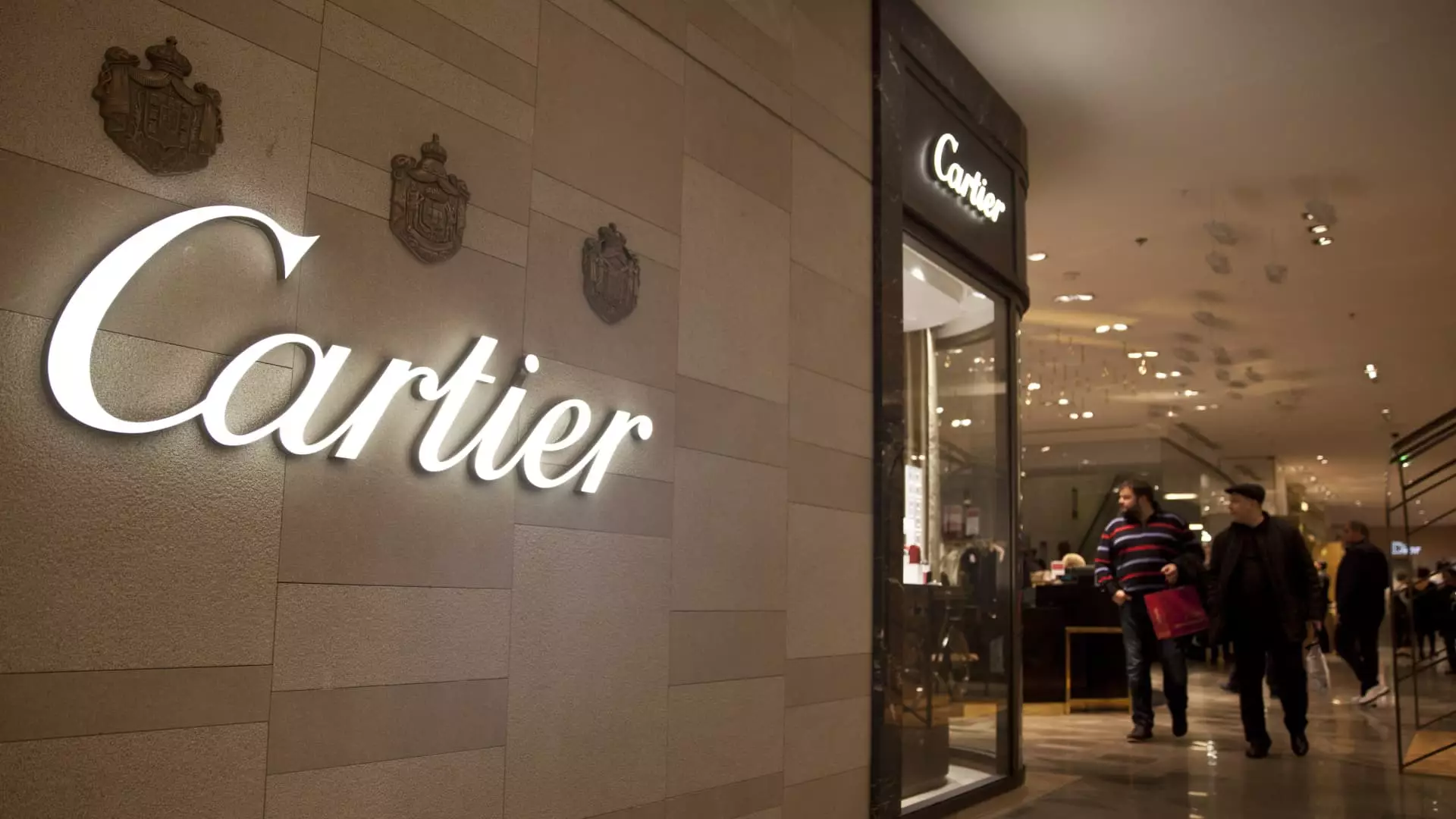In a surprising twist amidst a turbulent luxury market, shares of the Swiss luxury goods conglomerate Richemont, the parent company of the illustrious Cartier brand, experienced a considerable increase on Thursday. The reported sales for the fiscal third quarter surged by 10%, reaching an impressive €6.2 billion ($6.38 billion) at constant exchange rates. This remarkable figure was characterized by Richemont as its “highest ever” for quarterly sales, substantially surpassing analyst expectations, which anticipated a mere 1% rise according to analytical consensus noted by RBC. Such a performance not only revitalized investor confidence but also underscored the resilience of the luxury sector during a challenging economic landscape.
While Richemont’s robust figures are impressive, it is essential to acknowledge the underlying challenges faced in the Asia Pacific region, where sales fell by 7%. This decline was primarily propelled by a significant 18% drop in sales within mainland China, Hong Kong, and Macau. Once a significant pillar of demand for luxury goods, the Chinese market has now become a critical hurdle for the luxury sector. The lingering impact of the post-COVID-19 macroeconomic environment has impeded recovery, creating uncertainty for luxury brands operating in this vital market.
Despite the downturn in Asia, the overall performance of Richemont signaled positive momentum for the broader luxury sector. Other luxury powerhouses, including Christian Dior, LVMH, and Hermes, also witnessed a rise in their stock prices following Richemont’s announcement, which hinted at a renewed vitality in European luxury consumption during the holiday shopping season. Analysts noted that Richemont’s performance could serve as a leading indicator for a potential rebound in luxury goods sales worldwide.
The past year has presented a rollercoaster ride for Richemont’s stock, particularly during a period of strategic management changes. The appointment of Nicolas Bos as the new CEO in May, who formerly helmed the Van Cleef & Arpels brand, generated renewed interest from investors. Since then, the stock has shown a remarkable increase of 28.75% year-to-date, signaling optimism about the company’s strategic direction and operational stability.
Nevertheless, the volatility that characterized the shareholder experience is a reminder of the luxury market’s broader fluctuations. The first half of the fiscal year had witnessed a 1% year-on-year dip in sales, indicating the complexities and challenges posed by evolving consumer behaviors and economic conditions. Dip but rebound seems to encapsulate Richemont’s performance in recent times, with the latest results illustrating not only recovery but also a possible normalization of the luxury market dynamics.
According to industry experts, such as Luca Solca from Bernstein, the latest sales figures from Richemont could signal a pivotal moment for the luxury market. The growth witnessed in Europe and the Asia-Pacific region (excluding Japan and Greater China) can be attributed to increased domestic demand and returning tourist flows. Moreover, consistently strong local demand in the Americas further solidifies the positive outlook within the luxury segment.
Solca’s assessment that the results may mark the end of a trough for the sector aligns with increasing optimism around consumer strength and fluctuating macroeconomic factors. Indeed, consumer behavior is displaying signs of recovery, as spending patterns shift back toward experiences and premium goods—a hallmark of luxury consumption.
Richemont’s impressive performance in Q3 serves as both an individual victory and a precursor for a broader revival in the luxury sector. As the company navigates challenges, particularly in Asia, it simultaneously illuminates paths for growth that hinge on remarkable resilience and adaptive strategies. The luxury market is at a crossroads, and Richemont’s latest results could be the harbinger of a more stable and prosperous chapter in luxury retailing. By focusing on adapting to consumers’ evolving needs and harnessing emerging regional demands, luxury brands may yet capitalize on this scintillating opportunity for recovery.

